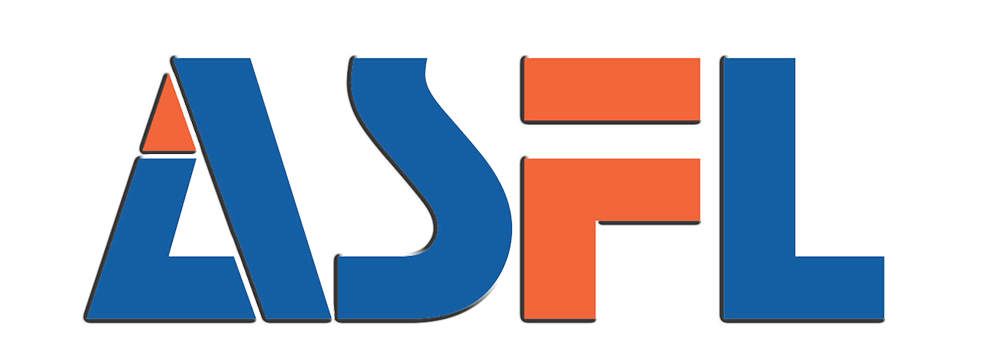Ensuring Product Safety and Consistency Through Water Quality
How Water Purity Impacts Product Safety and Consistency
Clean water isn't just important it's absolutely necessary when it comes to hitting safety requirements and keeping products consistent from one batch to the next in food and drink manufacturing. Some nasties like Pseudomonas bacteria or Legionella actually manage to stick around even after standard sterilization processes if they're hiding in untreated water sources. That means spoiled goods or worse health risks down the line. Reverse osmosis filtration systems knock out about 99.8 percent of all those dissolved solids floating around in water, giving formulators a solid foundation to work with. The FDA reported last year that companies making beverages who switched to properly treated water saw their recall rates drop by nearly two thirds compared to ones still using regular city water supply. For fillers and bottling equipment specifically, maintaining stable water quality matters a lot too since these machines need water that's balanced in pH levels and low in minerals otherwise packages get damaged and the whole operation loses its accuracy over time.
Common Contaminants in Source Water Affecting Taste and Safety
| Contaminant | Impact on Product | Maximum Allowable Level (FDA) |
|---|---|---|
| Chlorine | Alters pH, creates off-flavors | 4 mg/L |
| Heavy Metals | Leaches into products, toxicity risk | 0.005 mg/L (lead) |
| Sediment | Clogs filters, causes equipment jams | 0.5 NTU turbidity |
Water straight from the source usually has all sorts of dissolved salts and organic stuff floating around that messes up product quality. Some research back in 2022 showed pretty alarming numbers too - about 4 out of 10 groundwater samples had way too much iron, which gives drinks that unpleasant metal taste nobody wants. And let's not forget about those pesky calcium deposits building up in machines. When hard water leaves behind scale on nozzles, it actually cuts down how accurately these filling systems work by nearly 30% in some cases. That means products might end up underfilled or overfilled, creating all sorts of problems for manufacturers trying to maintain consistent output.
Water Quality Standards in Food and Beverage Production
Regulatory frameworks like FDA CFR Title 21 establish strict limits:
- Microbial content: ≤1 CFU/100mL for coliforms
- Chemical residues: <0.1 ppm for chloramines
- Turbidity: <0.3 NTU after filtration
Facilities using industrial reverse osmosis systems achieve 98% compliance with Global Food Safety Initiative (GFSI) audits, significantly higher than the 74% compliance rate among plants using basic filtration. These standards minimize cross-contamination risks during bottling and ensure water filling machines operate within optimal performance parameters.
Preventing Contamination and Ensuring Hygiene in Water Filling Machines
Preventing Microbial and Chemical Contamination in Water Filling Machines
Water filling equipment faces problems with microbial growth like Legionella and Pseudomonas bacteria, plus there's also risk from chemicals left behind by lubricants or cleaning products. According to research published by the IBWA in 2023, around one out of every five production line breakdowns was actually caused by biofilms forming in systems that weren't properly maintained. Manufacturers combat these issues by using stainless steel parts, specifically grades 304 and 316, since they don't stick to bacteria as much. Automated CIP systems help too because they get rid of those dead spots where stuff tends to collect over time. Most industry standards suggest doing some kind of daily cleaning with chlorine solutions somewhere between 50 and maybe even 100 parts per million to keep everything running clean across the whole system.
Role of Water Treatment in Maintaining Hygiene and Safety Standards in Water Bottling
When reverse osmosis gets combined with UV sterilization, it knocks out more than 99.9 percent of those nasty pathogens along with most dissolved solids right before the water goes into bottles. This setup meets all the FDA standards for bottled water production, specifically keeping coliform bacteria below 1 colony forming unit per milliliter as required by 21 CFR Part 129. The system keeps an eye on important parameters too. Turbidity needs to stay under 0.1 NTU and total dissolved solids should not exceed 10 parts per million. If something goes off track, the operators get immediate notifications so they can fix things fast. Studies have found that plants treating their water this way see around 63 fewer microbial issues than those without treatment. That means safer products for consumers and less risk of damaging a company's reputation when quality slips.
Enhancing Final Product Quality and Consumer Trust
How Treated Water Enhances Flavor, Clarity, and Shelf Life
Water treatment gets rid of those pesky dissolved solids and organic stuff that make drinks taste bad or look cloudy. According to some research from last year, companies that switched to reverse osmosis systems saw almost all their customer complaints about flavor disappear—like a 98% drop in problems related to taste. The fancy filters out there also tackle those tiny particles that create haze in liquids, which matters a lot for upscale beverage brands running their fast fill lines. When water stays chemically balanced after treatment, products last longer on shelves too. Nobody wants their drink going bad before it even hits store shelves, right? That's why proper water handling has become such a big deal across the entire beverage industry these days.
Case Study: Product Recalls Linked to Untreated Process Water
A European soft drink manufacturer had to pull back around 120,000 bottles from shelves in 2021 following a contamination scare worth roughly $2.3 million. Tests showed coliform bacteria had somehow gotten into the product during production. Investigation revealed the problem stemmed from stubborn biofilms building up inside the filling nozzles because cleaning procedures weren't being followed consistently enough. As a result of this mess, food safety standards have gotten much tougher across the industry. Most notably, about four out of five food safety auditors are now requiring companies to install real time TOC monitoring systems on their bottling lines. These systems help spot potential microbial issues before they become full blown contamination problems, giving manufacturers an early warning system against similar disasters.
Consumer Expectations and Brand Reputation Tied to Water Purity
According to research published in Food Quality and Preference in 2024, around three quarters of people will actually change brands if there's even one problem with water quality. On the flip side, businesses that openly share details about how they treat their water tend to keep customers at least 23 percent longer than those who don't. So what does this mean? Putting effort into clean water goes beyond just meeting regulations. When consumers see transparency about water treatment, they develop trust in the brand, which ultimately helps companies stay competitive in the marketplace over time.
Integrating Water Treatment Systems with Filling Line Operations
Seamless Connection Between Reverse Osmosis (RO) and Water Filling Machine Operations
Today's bottling plants rely heavily on combining reverse osmosis systems with their filling equipment to keep things clean and stop unwanted bacteria from getting into the product. Reverse osmosis takes care of about 99 percent of bad stuff like sulfates and heavy metals, and then there's that UV light treatment which kills off whatever microbes might still be hanging around. Once the water is all cleaned up, it goes straight into these automatic fillers that are set just right for dispensing without introducing any contaminants. Plants that have gone full circle with integrated RO and filling setups see roughly 15% fewer microbes showing up in their products when compared to older facilities still doing transfers manually. A study published in Food Safety Journal last year backs this up.
Industrial Reverse Osmosis Water Purification Systems in Bottling Lines
The big RO systems in the 1000 to 5000 gallons per day range have become pretty much mandatory for most large water bottling operations. They come equipped with those multi stage filters that actually meet those strict FDA regulations under section 129.40. What makes them really stand out though is their ability to monitor total dissolved solids on the fly while keeping those membranes clean automatically so they can maintain good flow rates around 20 to 30 liters per minute. According to some research from last year, facilities that switched to these industrial reverse osmosis units saw a drop in product recalls by nearly one third. The main reason? These systems tackle common problems head on like calcium buildup and weird flavors caused by chlorine residue.
Automation and Monitoring for Consistent Water Supply
Automation synchronizes water treatment with filling line controls via SCADA systems, improving efficiency and reliability:
| Feature | Manual Systems | Automated Systems |
|---|---|---|
| Contamination | Higher risk | 99.8% reduction (IBWA 2023) |
| Downtime | 15% more frequent | <1% monthly |
| Energy Use | 20–35 kW/hour | 8–12 kW/hour |
Cloud-based sensors monitor pH (6.5–7.5) and dissolved oxygen (<0.5 ppm) across more than 15 critical control points, initiating automatic CIP cycles when thresholds are breached. This closed-loop system reduces human error and ensures continuous, compliant production.
Reducing Downtime and Extending Equipment Lifespan with Proper Water Treatment
How Poor Water Quality Leads to Scaling and Maintenance Issues
When water isn't properly treated, it causes mineral scaling and forms biofilms that can cut down the flow rate in filling machines by about half after just six months of operation. The calcium and magnesium deposits build up so much that plants have to shut down regularly for descaling work. Organic matter accumulations also make those cleaning cycles take longer, sometimes adding around 22% extra time to each cycle. A recent industry report from 2024 shows that factories which skip water purification systems face roughly 30% more unexpected stoppages than those with proper treatment processes in place. These kinds of issues create all sorts of headaches for plant operators trying to maintain consistent production schedules.
- Nozzle clogs requiring cleaning every 120 operating hours
- Corrosion damage costing an average of $18,000 annually in part replacements
- 40% higher energy consumption due to increased pump strain
Reducing Downtime with Reliable Process Water Purification for Manufacturing
Reverse osmosis systems remove 99.8% of dissolved solids before water enters the filling line, maintaining consistent pressure and flow. Manufacturers using automated purification report 40% fewer unplanned stoppages than those relying on basic filtration. Key benefits include:
- Real-time TDS monitoring enabling proactive filter changes
- Self-cleaning membranes extending service intervals to 12–18 months
- 94% reduction in emergency maintenance calls
Extending Equipment Lifespan Through Clean-in-Place (CIP) and Treated Water Use
Using RO-treated water minimizes corrosion in stainless steel components, effectively doubling the lifespan of valves and seals. Facilities combining optimized CIP protocols with purified water report:
- 35% longer durability of pumps and manifolds
- 60% less wear from abrasive particles
- $740,000 saved over five years on premature equipment replacement (Ponemon 2023)
FAQ
Why is treated water important in beverage production?
Treated water is essential in beverage production to ensure safety, consistency, and product quality. It prevents contamination, enhances flavor, and satisfies regulatory standards.
How does reverse osmosis benefit bottling operations?
Reverse osmosis removes about 99.8% of dissolved solids, protecting equipment from scale buildup and enhancing product consistency. It's pivotal for maintaining hygiene and meeting safety compliance.
What contaminants in source water affect product quality?
Common contaminants such as chlorine, heavy metals, and sediment can alter taste, affect pH, and cause equipment issues. Regulating these is vital for product safety.
How does water treatment affect consumer trust?
Consumers value transparency in water treatment processes. Treated water ensures product safety and quality, building trust and improving brand reputation.
Table of Contents
- Ensuring Product Safety and Consistency Through Water Quality
- Preventing Contamination and Ensuring Hygiene in Water Filling Machines
- Enhancing Final Product Quality and Consumer Trust
- Integrating Water Treatment Systems with Filling Line Operations
-
Reducing Downtime and Extending Equipment Lifespan with Proper Water Treatment
- How Poor Water Quality Leads to Scaling and Maintenance Issues
- Reducing Downtime with Reliable Process Water Purification for Manufacturing
- Extending Equipment Lifespan Through Clean-in-Place (CIP) and Treated Water Use
- FAQ
- Why is treated water important in beverage production?
- How does reverse osmosis benefit bottling operations?
- What contaminants in source water affect product quality?
- How does water treatment affect consumer trust?





